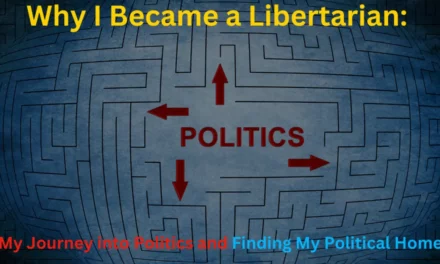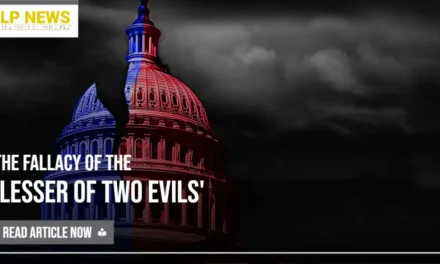Continued use of the Plurality voting method is killing us. In the 2016 and 2020 presidential elections, voters clearly elected candidates that the majority of voters opposed! Plurality causes polarization. It is worthless when there are more than two candidates. Plurality renders it virtually impossible for any other party to compete in elections with the two old declining parties! It must be replaced with a very much better voting method.
AADV is the simplest solution that works really well and consistently. It gives each voter the options to Approve either one or two of the candidates and to Disapprove of one candidate. Approvals and disapprovals are totaled for each candidate. The candidate that has the largest positive net approvals (approvals minus disapprovals) is the winner.
Since it is voters who will, through their ballots, choose the “best” candidates, there is no alternative but to lightheartedly assume that, collectively, voters do possess the knowledge and wisdom to make good decisions. A voting method is the critical mechanism at the heart of an election which performs the function of gathering some specific information from each voter, then processing that data in some manner to select the “best” candidate in each race.
Before it is possible to design (or select) a good voting method, it is absolutely essential to have a clear and concise definition of which candidate is the “best” one. Incredibly, this crucial first step is often skipped or glossed over.
Definition: The best possible choice is that result (chosen candidate) which maximizes voter satisfaction, net of dissatisfaction, when summed over all voters who voted.
There is no better way to translate the collective knowledge, judgement and wisdom of the voters into the best choice. This is the only and overriding objective that a voting method should have.
Note that “fairness” (however that may be defined) is not a consideration. However, it would be hard to think of anything “fairer” (a subjective term) than the above definition (an objective criterion).
The Gibbard-Satterthwaite Theorem (as extended) – It has been proven that all voting methods (except a dictatorship) can be manipulated to some extent by insincere or strategic voting. No voting method can be completely immune to such degradation, but some are much more susceptible to it than others. This must be one of the tradeoffs considered when designing or selecting a voting method.
Pointing out that AADV is susceptible to some form of strategic voting (which it is) does not disqualify it since every voting method can be disqualified on this basis.
The missing magic ingredient which is required to enable a voting method to work well is that voters must be empowered to vote, not just FOR candidates they like, but ALSO AGAINST candidates they do not like. None of the commonly discussed methods (IRV or any RCV method, AV, Score, STAR, etc.) does this and therefore cannot work nearly as well.
AADV far more accurately identifies the correct winner in races with any number of candidates (data is available for races having 2 through 7 candidates). It is so much better that it can qualitatively improve elections. Here’s how.
Anyone following Gallup’s polling on party affiliation knows that the two old parties have been in decline for at least the past 15 years. Currently, the Ds and Rs are down to about 27% each, while “all other” (the “Is”) have increased to 46%. Let’s compare Plurality and AADV in a 4-candidate election with D, G, L and R candidates. There are 100 voters.
Using Plurality, the 27 loyal Ds vote for the D candidate and the 27 loyal Rs vote for the R. So far, the D and the R are tied: D 27, G 0, L 0, R 27. Some of the 46 I voters would really like to vote for the G or the L, but they realize that one of the extreme and polarizing D or R candidates will almost certainly win. They feel an extremely strong pressure to vote for the lesser evil and not waste their vote on the G or the L. Only a few have the nerve to vote G or L, so the total vote looks something like this: D 48, G 2, L 3, R 47. Does that seem all too depressingly familiar?
Using AADV, voters have more options and it’s a bit harder to be sure what they will do. That’s a good thing. We can be pretty sure the 27 loyal Ds will use their first approval for the D candidate and their disapproval for the R candidate. The loyal Rs use their first approval for the R candidate and their disapproval for the D candidate. A few of the Ds and Rs might utilize their second approval for the G or the L, but most decide not to deploy their second approval as they do not wish to help any candidate other than their own. So far, net approvals might look like this: D 0, G 4, L 5, R 0.
With AADV, the 46 Is now feel perfectly free to vote for their true first choice since they can always use their second approval for the lesser evil. Perhaps a third of them vote like the loyal Ds and another third vote like the loyal Rs. A few of these two thirds may be willing to give their second approval to the G or the L. The final third vote first for the G or the L and give their second approval to whatever candidate they think is the lesser evil. Their disapproval goes to the candidate they consider worst. Final net approvals turn out something like this: D 6, G 9, L 13, R 5.
That’s a qualitative change for sure. But such dramatic defeats of the Ds and Rs cannot be expected to become the rule. The Ds and Rs will quickly realize that they can no longer win with the most extreme, polarizing candidates; they will be forced to nominate more broadly acceptable candidates with fewer negatives. However, AADV will give all candidates a shot at media coverage, voter consideration and even winning elections.
The opinions shared here do not necessarily represent the official position of the Libertarian Party. These editorial articles have been submitted by libertarians across the country, and featuring these topics does not represent an endorsement of the content therein.
The opinions shared here do not necessarily represent the official position of the Libertarian Party. These editorial articles have been submitted by Libertarians across the country, and featuring these topics does not represent an endorsement of the content therein.






Fascist Deep State World Mystery Secret Brotherhood Babylonian Saturn Negative Energy Code Druid's Greatest Secret Occult https://www.youtube.com/watch?v=KxTYwNADspM
Thanks for helping elect this right wing carpet bagger. Can’t wait!
I may have to change my affiliation with the lp after reading about an assassination post out of New Hampshire!…
Those are very valid points, and yet many people in this country can't undermine the republic and its foundations fast…
Agreed. The only alternatives I can see to BGB's ballot stuffing are open ballots (though the counters may just be…